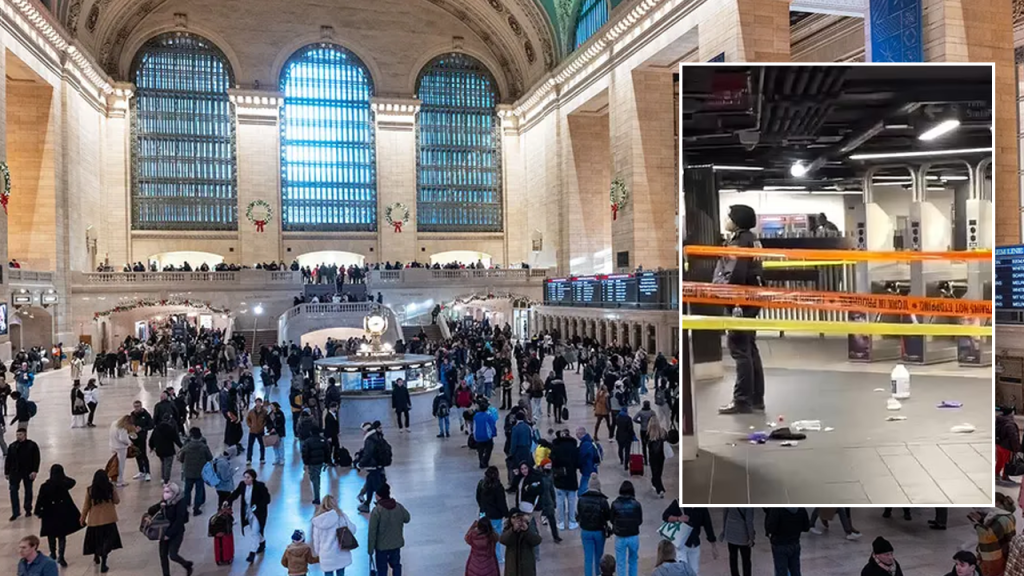The Christmas Eve stabbing incident at Grand Central Terminal underscores the persistent safety concerns within New York City’s subway system, despite official claims of declining crime rates. Two individuals, a 26-year-old woman and a 42-year-old man, fell victim to seemingly random attacks by 28-year-old Jason Sargeant. The man was reportedly slashed across his left wrist on the stairs leading to the southbound entrance following an altercation with Sargeant. Shortly thereafter, Sargeant allegedly confronted the woman near a turnstile, slashing her neck. Both victims were transported to local hospitals and are currently in stable condition. A knife was recovered at the scene, and Sargeant faces multiple charges, including two counts of first-degree assault, reckless endangerment, menacing, and criminal possession of a weapon. This incident follows closely on the heels of a horrific murder in the subway system, raising questions about the effectiveness of current safety measures.
The brutal murder preceding the Christmas Eve stabbing involved a woman being set on fire and left to die on a subway train. Sebastin Zapeta, a 33-year-old undocumented immigrant from Guatemala, was charged with first- and second-degree murder and first-degree arson in connection with this horrific crime. The sheer brutality of this incident sparked widespread outrage and further fueled public anxieties regarding subway safety, particularly given its occurrence just days before the stabbing at Grand Central. The close proximity of these violent acts highlights the ongoing challenges faced by authorities in ensuring the safety of commuters within the subway system.
Governor Kathy Hochul’s response to the subway murder drew sharp criticism for its perceived insensitivity and disconnect from the reality of escalating violence. Just hours after the woman’s death, Hochul posted on X (formerly Twitter), touting improvements in subway safety and citing declining crime statistics. She attributed this supposed progress to the deployment of the National Guard earlier in the year and the installation of cameras in subway cars. Critics, however, viewed her post as tone-deaf and a blatant attempt to downplay the seriousness of the situation, especially given the recent deployment of 750 National Guard members to address holiday crime.
Tom Homan, President-elect Trump’s incoming border czar, strongly condemned Hochul’s statement, accusing her of attempting to deflect responsibility for the ongoing safety crisis in the subway system. Homan, who had recently visited New York City to discuss illegal immigrant crime with Mayor Eric Adams, blamed lax federal immigration policies for contributing to the rise in violent incidents. He pointed to the murder of the woman on the subway as another example of an American citizen being killed by an undocumented immigrant, a trend he claimed was becoming increasingly common due to sanctuary jurisdictions and inadequate immigration enforcement.
The recent attacks in the New York City subway system raise broader concerns about public safety and the effectiveness of current strategies to address crime. While Governor Hochul maintains that crime is decreasing, the frequency of violent incidents, particularly those involving vulnerable individuals, suggests otherwise. The criticism levelled at Hochul highlights the growing disconnect between official pronouncements and the lived experiences of commuters who continue to face real and present dangers within the subway system. The deployment of the National Guard, while intended to enhance security, appears to have done little to deter violent crime, further fueling public anxieties.
The juxtaposing narratives surrounding subway safety – official claims of improvement versus the stark reality of violent attacks – underscore the urgent need for a comprehensive reassessment of current strategies. The perception of a disconnect between those in power and the public they serve erodes public trust and confidence in the ability of authorities to effectively address the complex issue of crime within the subway system. Finding a sustainable solution requires a multifaceted approach that acknowledges the root causes of crime, enhances security measures, and prioritizes the safety and well-being of all commuters. The recent incidents serve as a stark reminder that much work remains to be done to ensure that the New York City subway system is a safe and reliable mode of transportation for all.

